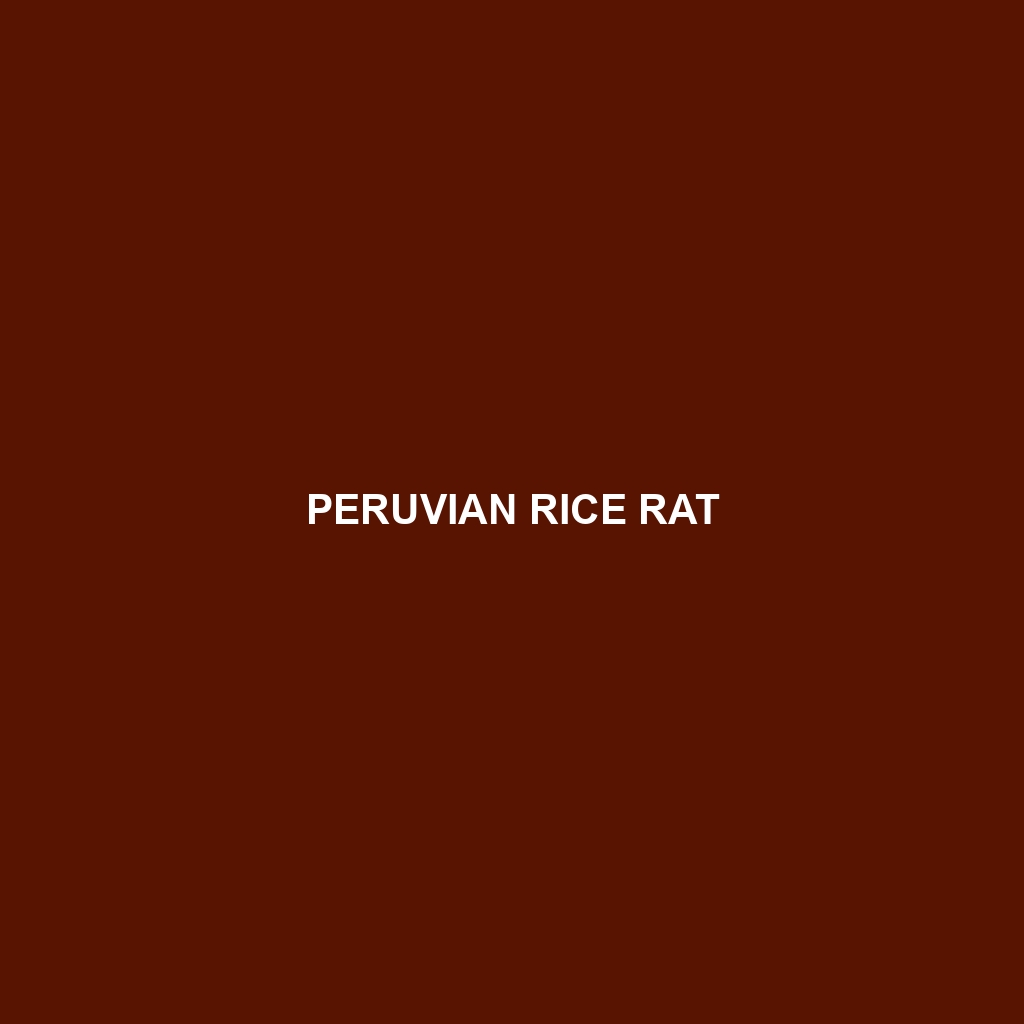Peruvian Rice Rat
Common Name: Peruvian Rice Rat
Scientific Name: Oryzomys julesi
Habitat
The Peruvian Rice Rat is primarily found in the tropical forests of Peru and adjacent regions, particularly in the Amazon Basin. This species thrives in damp, lowland areas, often inhabiting wetlands and riverbanks. Its habitat includes marshes, floodplains, and areas with dense vegetation, providing ample cover for this elusive rodent.
Physical Characteristics
The Peruvian Rice Rat typically measures about 25 to 30 cm in length, including a long, hairless tail that can be as long as its body. Its fur is predominantly a reddish-brown color on the back, with a lighter shade on the belly. Distinctive features include large, rounded ears and sharp incisors, which aid in its feeding habits. The combination of its size and coloration allows it to blend seamlessly into its natural environment, evading predators.
Behavior
Known for its nocturnal habits, the Peruvian Rice Rat is most active during the night. It exhibits excellent climbing abilities, often seen scaling trees and shrubs in search of food. Socially, these rodents are relatively solitary, although they can occasionally be found in pairs during the breeding season. Their agility and stealth make them adept at avoiding detection by predators.
Diet
As an omnivorous species, the Peruvian Rice Rat primarily feeds on seeds, fruits, and small invertebrates. It plays a crucial role in the ecosystem by aiding in seed dispersal and maintaining plant diversity in its habitat. This species has a preference for rice and other grassy plants found in marshy environments, which significantly influences its foraging behavior.
Reproduction
The breeding season for the Peruvian Rice Rat generally occurs during the rainy months, when food is more abundant. Females typically give birth to litters of 3 to 6 pups after a gestation period of approximately 24 days. The young are born hairless and dependent on their mother for nourishment, quickly developing the skills needed for survival in their lush habitat.
Conservation Status
Currently, the Peruvian Rice Rat is classified as vulnerable due to habitat loss and environmental changes affecting its natural range. Efforts to conserve its habitat are crucial for maintaining healthy populations of this unique species. Conservationists advocate for increased protection of wetlands and tropical forests to ensure the survival of the Peruvian Rice Rat.
Interesting Facts
One fascinating aspect of the Peruvian Rice Rat is its phenomenal adaptability; it can thrive in various ecological settings, including areas disturbed by agriculture. Additionally, these rats possess an exceptional sense of smell, which they use to locate food and navigate their surroundings efficiently.
Role in Ecosystem
The Peruvian Rice Rat plays a significant role in its ecosystem by acting as both a seed disperser and a prey species for larger predators. Through its feeding habits, it contributes to plant diversity and helps maintain the balance within its habitat. This interplay between the rice rat and other wildlife underscores its importance in the intricate web of life in the Amazon.
